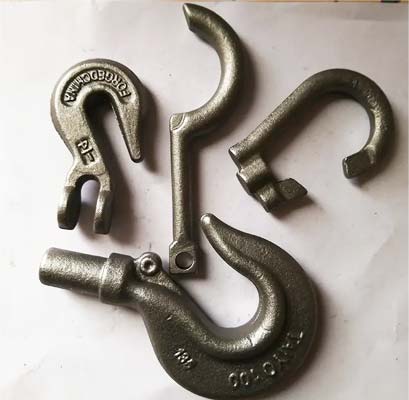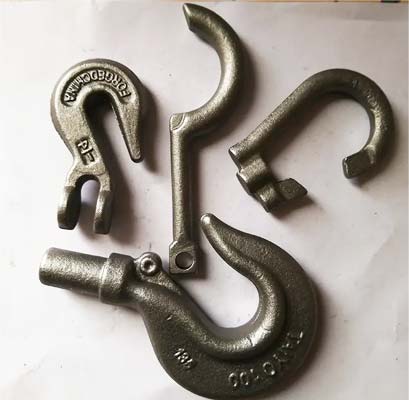- Contact Innally, Let you purchase forgings in China more favorable prices, products more assured!
- Hotline:+(86)15038323776 Email:innally@innally.com
Common defects of hook forgings in the production process
- Category: Metal forging, Steel forgings
- |
- Date: 05/01/2024
These defects may have a negative impact on the performance and service life of hook forgings. In order to ensure product quality, quality control should be strengthened in the production process, the quality of raw materials and processing parameters should be strictly controlled, and potential defects should be discovered and solved in time to improve the quality and reliability of forgings.
Product Details
In the production process of hook forging, there may be some defects due to the influence of many factors. These defects may affect the quality, safety and service life of the forgings. This paper will introduce the common defects of hook forgings in the production process and their causes.
Surface cracks: Surface cracks are one of the common defects of hook forgings. It usually appears on the surface of the forgings, in a linear distribution. Surface cracks may be caused by improper temperature control during forging, excessive cooling rate, impurities inside the material or stress concentration.
Internal cracks: Unlike surface cracks, internal cracks appear inside the forgings and usually form during forging. Internal cracks may be caused by defects in the material, high forging temperature or improper operation during forging.

Folding: Folding refers to the phenomenon that the surface of the forging appears wrinkled or uneven. Folding may be caused by uneven metal flow during forging, unreasonable mold design or mold wear.
Inclusions: Inclusions refer to non-metallic substances that are included in the forgings, such as oxide, sand, etc. The inclusion may be caused by surface contamination of raw materials, wear of molds or unclean lubricants.
Size overshoot: Size overshoot refers to the actual size of the forging and the design size there is a large deviation. Dimensional overshoot may be caused by operating errors during forging, mold wear or deformation during heat treatment.
These defects may have a negative impact on the performance and service life of hook forgings. In order to ensure product quality, quality control should be strengthened in the production process, the quality of raw materials and processing parameters should be strictly controlled, and potential defects should be discovered and solved in time to improve the quality and reliability of forgings. At the same time, for forgings that have defects, they should be repaired or scrapped accordingly to avoid unqualified products entering the market.
nannan
INNALLY mainly provides you with various types of cast and forged parts products. Welcome your inquiries! innally@innally.com
Related Products
Search
Forging center
- Steel forgings
- Aluminium alloy forging
- Titanium alloy forging
- Stainless steel forging
- Copper forging
- Automotive forgings
- Locomotive forging
- Bicycle forgings
- Motorcycle forging
- Rigging and fasteners
- Bearing forging
- Electric power fittings
- Marine forging
- Mechanical forgings for metalworking
- Mining machinery forgings
- Marine engineering forgings
- Construction machinery forgings
Popular product

© 2025. All Rights Reserved.







